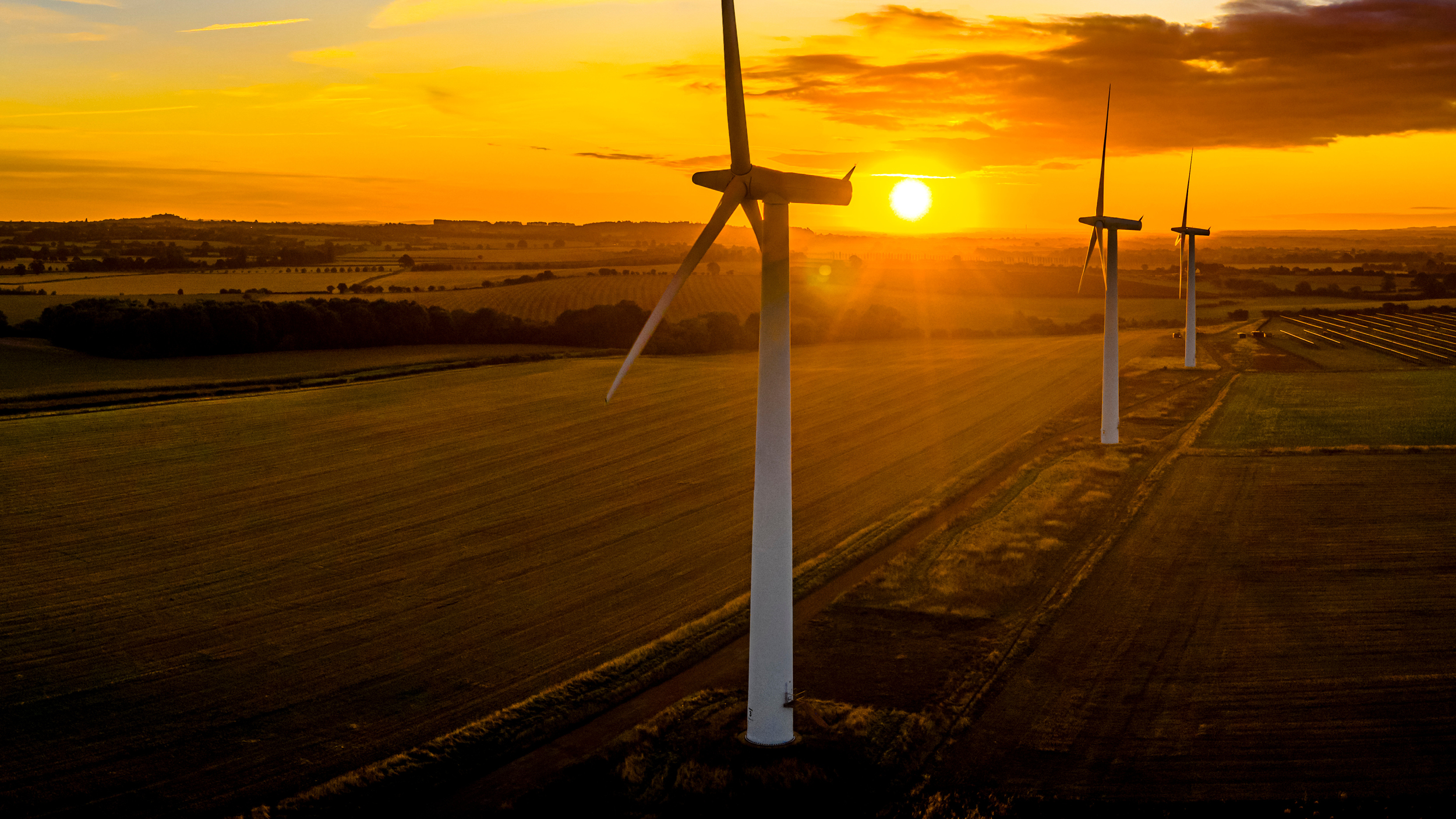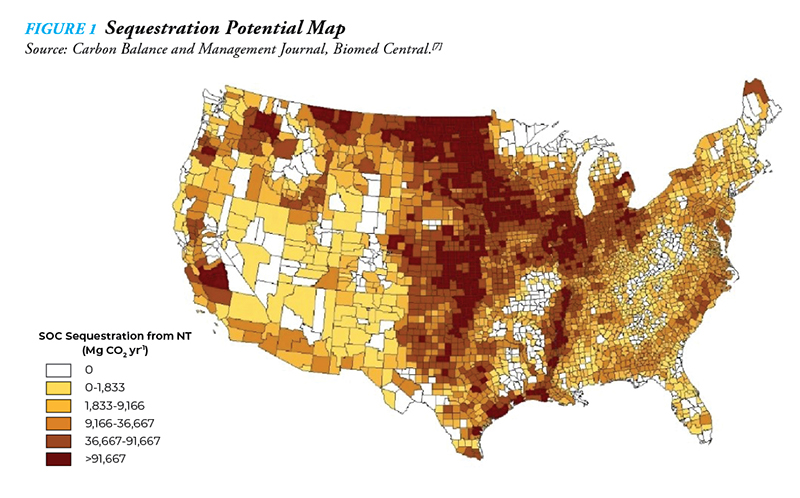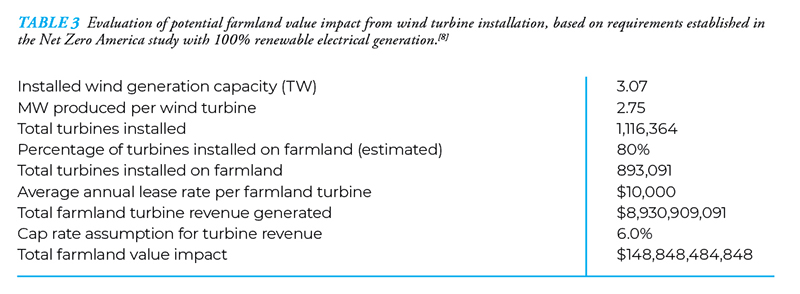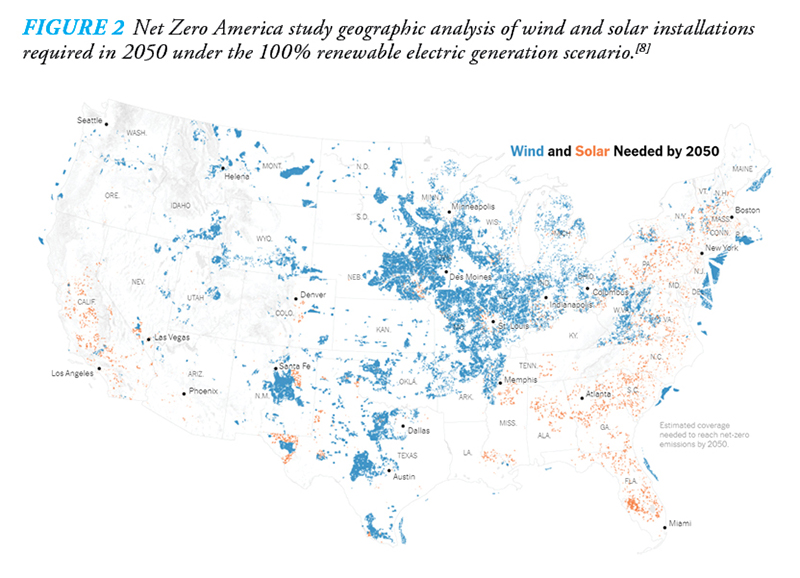
The Inflation Reduction Act of 2022 (IRA) was signed and became public law on August 16, 2022. There has been no shortage of political debate around whether the law would serve its namesake and broadly reduce inflation. However, it is clear the long-term policy objectives laid out in the IRA, if realized, will have significant inflationary impacts on the farmland asset class.
The primary spending provisions of the IRA are focused on energy security and climate change, with $394 billion allocated to a range of programs over 10 years. Table 1 provides the breakdown of spending by economic sector. Although agriculture is directly allocated just over 5% of the funding, several of the programs in the Energy and Transportation and Electric Vehicles sectors directly impact agriculture, and farmland specifically.

The IRA has been at the forefront of discussions about spending priorities and policy direction. When considering how the IRA could be impactful for farmland, the legislation also needs to be analyzed in the context of two additional spending laws: 1) The U.S. Bipartisan Infrastructure Law (BIL), signed into law in November of 2021, and 2) The Creating Helpful Incentives to Produce Semiconductor and Science Act (CHIPS Act), signed into law in August of 2022. The BIL adds $550B in new spending over 10 years, with $266B of that amount allocated to core U.S. infrastructure development, including the power grid, broadband, water, and environmental resiliency and remediation.[2] The CHIPS Act allocates $278B in new spending over 10 years, directed at developing the U.S. semiconductor industry through manufacturing, R&D, and workforce development programs.[3]
The IRA is the flagship program establishing current U.S. leadership’s policy initiatives to transition to a renewable energy and net zero emissions economy. The BIL and CHIPS Act provide additional direct funding to key programs that are viewed as essential for execution of these policy initiatives, particularly for renewable energy and electric vehicle production. In combination, the IRA, BIL, and CHIPS Act set a clear policy direction for a targeted future U.S. economy. This future, if realized, will have significant impacts on farmland values.
IRA FUNDING IMPACTING AGRICULTURE AND FARMLAND
The IRA allocates nearly $44B in funding which will directly impact agriculture and farmland.[4] This funding includes over $20B for conservation programs and $3.1B in farm debt relief, rural renewable energy tax credits, and biofuel tax credits. The direct funding allocated for agricultural programs represents one part of the IRA’s impact on farmland.
The current administration has established clear goals for a “carbon pollution-free power sector by 2035 and net zero emissions economy by no later than 2050.”[5] The combined programs of the IRA, BIL, and CHIPS Act are assembled to accelerate the U.S. economy toward these goals. This high-level policy goal, combined with the program infrastructure put in place through the IRA, represent several potential impacts for U.S. farmland.
HOW DOES THE INFLATION REDUCTION ACT IMPACT FARMLAND VALUES
- - Carbon sequestration and greenhouse gas emissions quantification
- - Broad supply chain support for accelerating renewable electric generation capacity
- - Extended and increased funding to conservation programs
- - Renewable fuels and biofuels support
Carbon sequestration – The IRA allocates $300M for quantification of soil carbon sequestration and greenhouse gas (GHG) emissions. These federal government initiatives will work in conjunction with significant private sector investment to facilitate credit payments for increasing carbon stored in farmland soils. The USDA programs funded through the IRA will work toward establishing baseline soil carbon quantification and valuation, with the goal of creating more stable and less discounted transactions in the emerging carbon marketplace.
The policy goals of a ‘net zero’ U.S. economy, as established through the IRA, require significant carbon sequestration in farmland soils. Identifying the true potential of soil carbon sequestration across the nation’s 396M acres of cropland is challenging. Let us consider scenarios based on current estimates.
Utilizing current USDA planning tools, best estimates are that over 200M metric tons (MT) of carbon can be sequestered annually through broad adoption of reduced tillage and cover cropping practices.[6] Table 2 calculates the impact to farmland values at three carbon market price points, assuming a broad average of a 3.5% cap rate for U.S. farmland. Assuming 200M MT of carbon sequestration and a carbon value market of $60/ton would create over $340B in additional value for U.S. farmland, representing a nearly 10% increase in total asset class value.


Renewable/Carbon Free Electric Generation – The IRA provides the policy framework for a “carbon pollution-free power sector by 2035.” This initiative is very aggressive and will require substantial scale-up of renewable electric generation. The Net Zero America study developed at Princeton University[8] develops scenarios based on five approaches to decarbonization, with the goal of a net zero emissions U.S. economy by 2050. For illustrative purposes, Table 3 utilizes the analysis results from the Net Zero America scenario that is constrained to 100% renewable electricity production, so as to look specifically at the farmland impact of wind power generation. This scenario includes several illustrative assumptions including what percentage of the capacity is installed on farmland, the lease rate per turbine, and the capitalization rates used to calculate value from the turbine lease revenue. The set of assumptions in Table 3 identifies nearly $150B in added value to farmland.

The Net Zero America study projects 2.75 TW of installed solar capacity in the 100% renewable electricity production scenario. Unlike wind, solar installations represent a land use change from current agricultural production. The overlap of solar installation with farmland is likely to include areas that face productivity challenges, including future water availability constraints on currently irrigated farmland. This rapid increase in solar capacity will provide additional revenue to farmland nationally, but would fundamentally shift the land use from agricultural production to energy.
REGIONAL IMPACTS
Figure 2 provides a geographic analysis of the required wind and solar installations from the Net Zero America study. Figures 1 & 2 highlight US farmland regions that could see disproportionate impact if the IRA policy goals are fully realized. The Corn Belt presents the most significant carbon and wind energy opportunities. This region will receive proportionally high increases in revenue, and subsequently larger increases in farmland values if the IRA policy goals are realized.

Conservation programs – The $20.9B funding increases to existing and new USDA conservation programs impacts farmland values in three primary ways: 1) several of the programs deliver cash payments for conservation practices, adding revenue to the farmland operations; 2) additional program dollars fund farmland improvements, impacting long term function and value; and 3) significant R&D is funded to develop practices and methods that increase productivity within conservation management systems. The R&D funding is perhaps the most significant, as new programs are being developed to quantify soil carbon sequestration and support the market in placing value on ecosystem services provided by farmland. If these programs create clear and concise methodologies to the market, then the soil carbon opportunity described previously can be accelerated and realize more of the value potential.
Biofuels incentives – The policy goal of a net zero emissions U.S. economy by 2050 will require liquid fuels from non-fossil fuel sources. Aviation, agriculture, and heavy transport are examples of industries that will rely on liquid fuels for the foreseeable future. The IRA extended several tax credits incentivizing biofuel production. The net zero policy framework envisions a significant shift in biofuel production. Currently ethanol is the dominate biofuel, and corn-based ethanol has had a significant positive impact on farmland values through the Corn Belt region. Electrification of the passenger vehicle fleet, a primary current policy goal, will reduce demand for corn-based ethanol. However, achieving the net zero goals will require significant growth in renewable diesel and sustainable aviation fuel (SAF) production.
Table 4 provides the scale of current ethanol capacity relative to the renewable diesel and SAF production needed to meet policy goals. The aggregate use of biofuels will increase to meet current net zero targets, with the IRA providing incentives to advance that goal. While the impact on national farmland values will be a net positive, the scale and regionality of that impact will emerge as renewable diesel and SAF production is developed.

The Inflation Reduction Act of 2022 provides a clear picture of policy objectives for U.S. energy production and climate change responses. Like all policy initiatives, the ultimate outcomes of the spending and incentive programs are uncertain. However, the IRA sets a policy path with several potential positive outcomes for farmland values: 1) significant revenue increases from carbon sequestration and ecosystem services provided; 2) significant revenue increases from renewable energy production; 3) increased funding, which in turn drives land improvements and conservation practice funding; and 4) increased role of farmland in the U.S. energy sector through additional biofuel production. All these outcomes expand the current U.S. farmland revenue base and create additional value. The Inflation Reduction Act is clearly an ironic name when evaluating the long-term impacts on farmland values.
References:
[1] Kumar, Adi, et al. “The Inflation Reduction Act: Here's What's in It.” McKinsey & Company, McKinsey & Company, 26 Oct. 2022, https://www.mckinsey.com/industries/public-and-social-sector/our-insights/the-inflation-reduction-act-heres-whats-in-it.
[2] “The US Bipartisan Infrastructure Law: Breaking It Down.” McKinsey & Company, McKinsey & Company, 16 Feb. 2022, https://www.mckinsey.com/industries/public-and-social-sector/our-insights/the-us-bipartisan-infrastructure-law-breaking-it-down.
[3] Badlam, Justin, et al. “The Chips and Science Act: Here's What's in It.” McKinsey & Company, McKinsey & Company, 6 Oct. 2022, https://www.mckinsey.com/industries/public-and-social-sector/our-insights/the-chips-and-science-act-heres-whats-in-it.
[4] Bynum, Lee. “Reviewing the Inflation Reduction Act of 2022; Part 1.” Farmdoc Daily, 17 Aug. 2022, https://farmdocdaily.illinois.edu/2022/08/reviewing-the-inflation-reduction-act-of-2022-part-1.html.
[5] “Fact Sheet: President Biden Sets 2030 Greenhouse Gas Pollution Reduction Target Aimed at Creating Good-Paying Union Jobs and Securing U.S. Leadership on Clean Energy Technologies.” The White House, The United States Government, 22 Apr. 2021, https://www.whitehouse.gov/briefing-room/statements-releases/2021/04/22/fact-sheet-president-biden-sets-2030-greenhouse-gas-pollution-reduction-target-aimed-at-creating-good-paying-union-jobs-and-securing-u-s-leadership-on-clean-energy-technologies/.
[6] “Opportunities and Challenges Associated with ‘Carbon Farming’ for U.S. Row-Crop Producers.” Center for Commercial Agriculture, 1 July 2021, https://ag.purdue.edu/commercialag/home/resource/2021/06/opportunities-and-challenges-associated-with-carbon-farming-for-u-s-row-crop-producers/.
[7] Sperow, Mark. “What Might It Cost to Increase Soil Organic Carbon Using No-till on U.S. Cropland? - Carbon Balance and Management.” BioMed Central, Springer International Publishing, 5 Dec. 2020, https://cbmjournal.biomedcentral.com/articles/10.1186/s13021-020-00162-3#Fig2.
[8] America, Net-Zero. “Net-Zero America Project.” Princeton University, The Trustees of Princeton University, https://netzeroamerica.princeton.edu/the-report.
[9] “U.S. Fuel Ethanol Plant Production Capacity.” U.S Energy Information Administration, 8 August 2022. https://www.eia.gov/petroleum/ethanolcapacity/
[10] “Diesel Fuel Explained.” U.S Energy Information Administration, 6 July 2022. https://www.eia.gov/energyexplained/diesel-fuel/use-of-diesel.php
[11] “Less Production and More Demand Have Reduced U.S. Jet Fuel Inventories.” U.S Energy Information Administration, 31 December 2021. https://www.eia.gov/todayinenergy/detail.php?id=50627














